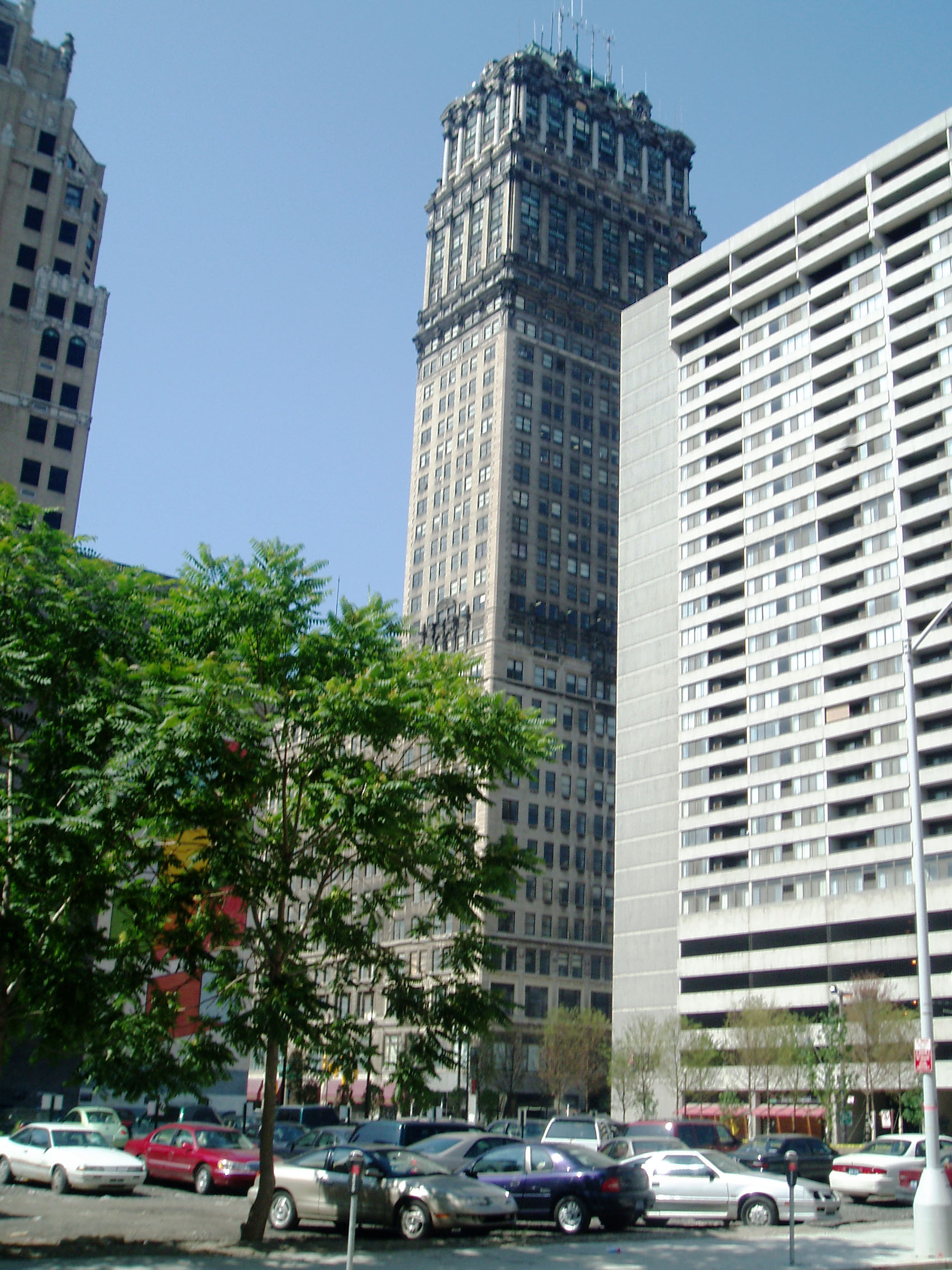

By 1913, the vehicle industry in Detroit began to prosper.† There was already great wealth in the city derived from its late Nineteenth Century manufacturing. industries.† A booming financial district was growing on the west side of Campus Martius.† The Book brothers—James Burgess, Herbert and Frank—were real estate entrepreneurs and developers.† Similar to other cities, Detroit was a dirty city in the first decade of the last century since soft coal was used in most factories, by the railroads and to heat homes.† Horses were still numerous on the streets.† In about 1909, Mayor Brietmeyer, who was a florist by profession, sought to bring the City Beautiful movement to Detroit.† One accomplishment of those efforts was the creation of the attractive Cultural Center on Woodward near Warren.
One of the designers involved in Detroitís City Beautiful movement, Edward H. Bennett, proposed tearing down the low-rise building along Washington between Michigan and Grand Circus Park.† Washington would become a broad boulevard and the old building would be replaced by more attractive structures befitting a city of Detroitís importance.† The Book Brothers saw an opportunity in this plan to remodel Washington between Michigan Avenue and Grand Circus Park.† Their plans called for anchoring one end of Washington Boulevard with the cityís most elegant hotel.† Then along Washington Boulevard, they would construct architecturally significant buildings with up-scale stores at street level and attractive office space above.
The Book brothers made much progress.† They had plans for at least five major buildings.† Four of them were completed, each designed by Louis Kemper.† All of them remain standing in 2009.† The 13-story Book Building facing Washington Boulevard was finished in 1917.† Next came the Book Cadillac Hotel at Washington and Michigan.† When it opened in 1925, it may have been the most elegant and well-equipped downtown hotel in any large American city.† After being empty for about twenty years, the Westin Hotel firm restored the Book Cadillac to its original glory and reopened it in late 2008.
The Book Tower was the third of the Book Brothers building on Washington Boulevard to be completed.† This is a 38-story building with two additional below-ground floors.† The first three floors were designed for retail shops, while the top two floors are devoted to the buildingís mechanical needs.† Started in 1916, I believe that the first 13 stories were completed quite rapidly.† At that time, it matched the adjoining Book Building.† When the demand for downtown office space increased, the Book Tower was completed until 1926.† From then until the Penobscot Building was finished it 1928, it was the tallest structure in the city.† It is faced in limestone and features a copper roof. †The roof turned green long ago and the once clean, almost white, limestone facing turned a grimy gray-black.
The fourth of the Book Brothers buildings, the Industrial Bank Building, also designed by Louis Kamper and located at the northwest corner of Washington Boulevard and Grand River, was completed in 1928.† This 22-story structure is now the Industrial Senior Apartments.† The final building in their series was to be an 81-story skyscraper adjoining the Book Tower.† I believe that architectural plans were developed for this structure, but before construction started, the Great Depression began. Louis Kamper also designed a magnificent home for James Burgress Book at 8625 Eaat Jefferson in Indian Village.
Demand for office and retail space in downtown Detroit plummeted after the 1960s. John Lambrecht, a Detroit developer and investor, purchased the Book Building and Book Tower in 1989 with the intention of renovating them so that they would prosper. Unfortunately, he died shortly after this purchase. His widow took over management of the properties and invested in their renewal, but this did not turn out to be a profitable investment. In 2006, she sold the buildings to New developers who, in turn sold them to California developers, but these firms went into bankruptcy. In August, 2008 they were purchased by a Canadian firm, AKNO Enterprises. Apparently, that owner was not prepared to make immediate investments in the buildings, so the remaining tenants left. The final tenant, Bookies Tavern on the first floor, closed for good on January 5, 2009.
Architect: Louis Kamper
Date of Completion: 1928
Architectural Style: Italian Renaissance
Use in 2009:† Empty Building awaiting reuse
City of Detroit Designated Historic District: Not listed
State of Michigan Registry of Historic Sites: Not listed
National Register of Historic Places: The Book Tower is within the Washington
Boulevard Historic District. Listed July 15, 1982.
Photograph:† Ren Farley
Description Updagted: February 18, 2009
††Return to Office and Commercial Building